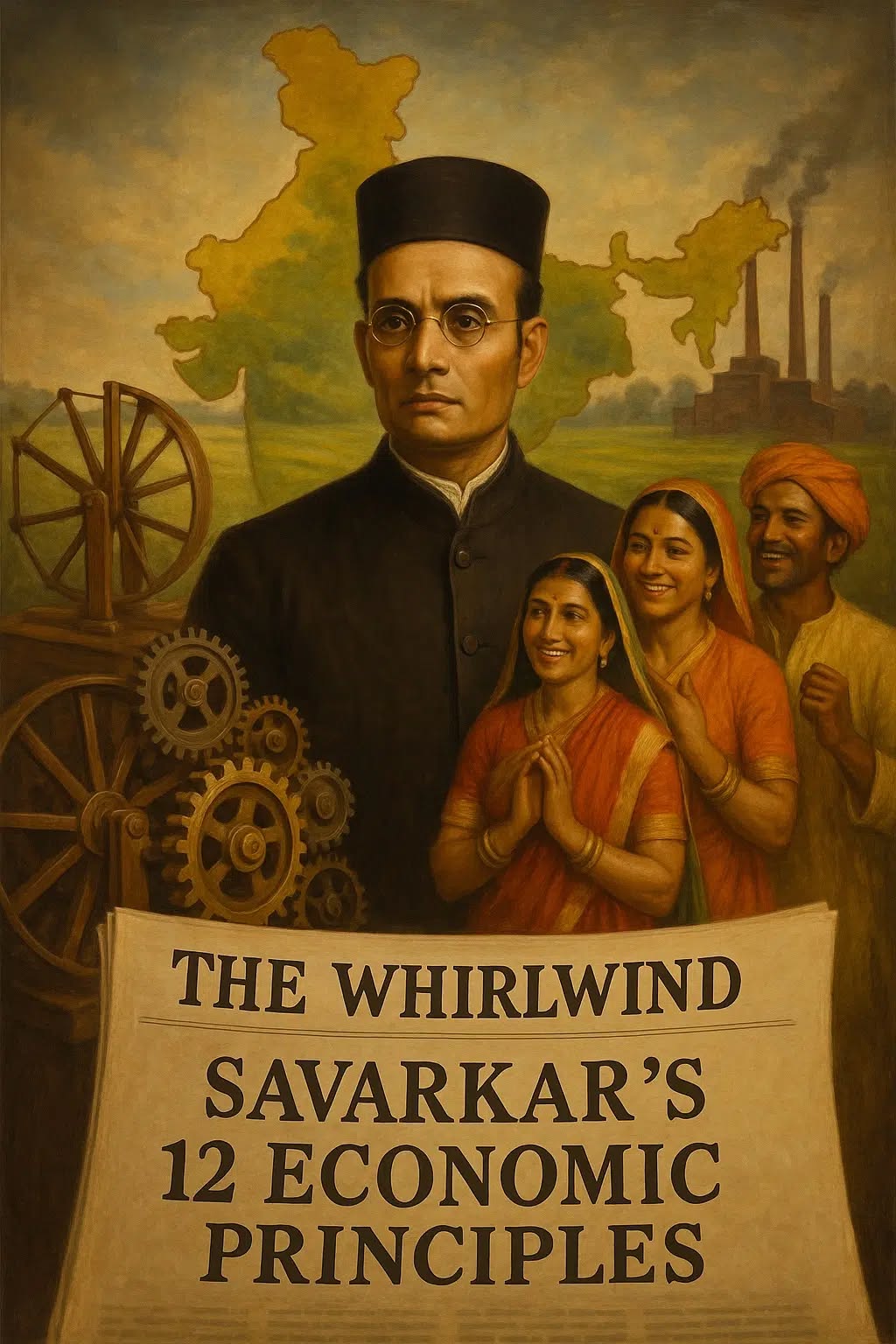Among the circle of revolutionary young men who gathered around Vinayak Damodar (Veer) Savarkar at India House in London, one name shines with both tragedy and inspiration – Madan Lal Dhingra (1883–1909). His short life, ending at the gallows in Pentonville Prison, was deeply intertwined with Savarkar’s mentorship, ideas, and revolutionary vision.
From Apolitical Student to Revolutionary
Born on 18 September 1883 in Amritsar, Dhingra was the sixth of seven sons in a prosperous family. His father, Dr. Ditta Mal Dhingra, was a celebrated eye specialist and civil surgeon, while his brothers pursued professions as doctors and barristers. In 1906, Madan Lal travelled to London to study engineering at University College.
At first, Dhingra seemed far removed from politics. Tall, handsome, and fashionable, he enjoyed a vibrant social life, often the centre of attention in student gatherings. Politics, let alone revolution, did not occupy his thoughts. But fate led him to India House in Highgate, the crucible of Indian nationalism abroad, where Savarkar was the commanding spirit.
The Turning Point at India House
The transformation of Dhingra under Savarkar’s influence became well-known and documented. On one Sunday, as Savarkar delivered a passionate lecture on India’s enslavement, Dhingra and his friends made a ruckus in the adjoining room. A furious Savarkar stormed in and rebuked him: how could he waste his time in frivolity while millions of his countrymen suffered under foreign rule?
Shamed, Dhingra left India House for days, wrestling with Savarkar’s words. When he returned to apologize, Savarkar welcomed him without reproach. That moment left an indelible mark. From then on, Dhingra pledged himself to the cause of freedom, moving from a carefree student to a committed revolutionary.
Savarkar’s Mentor–Disciple Relationship with Dhingra
At India House, Savarkar became more than a friend – he was Dhingra’s mentor and ideological guide.
- Ideological Influence: Savarkar’s fiery lectures and his book manuscript The Indian War of Independence of 1857 convinced Dhingra that armed struggle was a legitimate path. Accounts suggest Savarkar administered to him an oath on the Bhagavad Gita and a pistol, binding him to the cause.
- Practical Training: Dhingra frequented shooting ranges, gaining proficiency with revolvers. It is widely alleged, though never conclusively proven, that the weapon he later used was supplied by Savarkar.
- Moral Support: When many Indian leaders condemned Dhingra’s violent path, Savarkar defended him, praising his courage and sacrifice.
This mentor–disciple bond illustrates how Savarkar’s revolutionary circle in London transformed ordinary students into extraordinary revolutionaries willing to stake their lives for India.
The Assassination of Curzon Wyllie
On 1 July 1909, Dhingra took a step that reverberated across two continents. At a reception at the Imperial Institute, London, he shot Sir William Hutt Curzon Wyllie, a senior official of the India Office. In the scuffle, a Parsi doctor, Cowasji Lalkaka, was also fatally wounded – something Dhingra later expressed regret for, calling it an accident.
Dhingra was immediately arrested. At his trial, he refused to plead for mercy and proudly declared: “I am proud to have the honor of laying down my life for my country.” On 17 August 1909, he was executed at Pentonville Prison. His remains were only repatriated to India in 1976.
Aftermath and Savarkar’s Defense
Dhingra’s act divided opinion. Moderates and Gandhians decried it as misguided violence. Gandhi himself remarked that Dhingra’s patriotism was “blind love… given in a wrong way.” Yet for Savarkar, it was the epitome of sacrifice. He circulated pamphlets like Madan’s Talwar praising Dhingra’s martyrdom, even as British authorities intensified their crackdown on India House.
Savarkar later recalled how Dhingra’s gallant death inspired faith in the strength of their organization, not only among Indians but also across revolutionary circles in France and Germany.
Legacy of a Revolutionary Bond
The relationship between Savarkar and Dhingra remains emblematic of the mentor–disciple dynamic in revolutionary politics.
- Savarkar, the intellectual architect, provided the ideological framework for militant nationalism.
- Dhingra, the disciple, turned those ideas into decisive action, immortalizing himself as one of India’s earliest martyrs abroad.
Though controversial, Dhingra’s sacrifice echoed far beyond London. His execution hardened British resolve against Savarkar, who himself was arrested the following year. Yet for generations of Indian revolutionaries, Madan Lal Dhingra—transformed under Savarkar’s influence—stood as a shining symbol of courage, conviction, and ultimate sacrifice.
💭 What do you think? Do you think Savarkar’s mentorship was the decisive factor that transformed Dhingra from a carefree student into a revolutionary? Why or why not? Was Dhingra’s assassination of Curzon Wyllie an act of misguided violence, or a powerful statement of resistance against colonial oppression? Do you believe martyrdom like Dhingra’s has a more lasting impact than political negotiations and reforms?
👉 Share your thoughts in the comments below!
Sources
GODBOLE, Vasudev Shankar. 2004. Rationalism of Veer Savarkar. Itihas Patrika Prashan: Thane/Mumbai.
KEER, Dhananjay. 1988. Veer Savarkar. Third Edition. (Second Edition: 1966). Popular Prakashan: Bombay (Mumbai).
SAMPATH, Vikram. 2019. Savarkar (Part 1). Echoes from a forgotten past. 1883-1924.Penguin Random House India: Gurgaon.


Leave a Reply